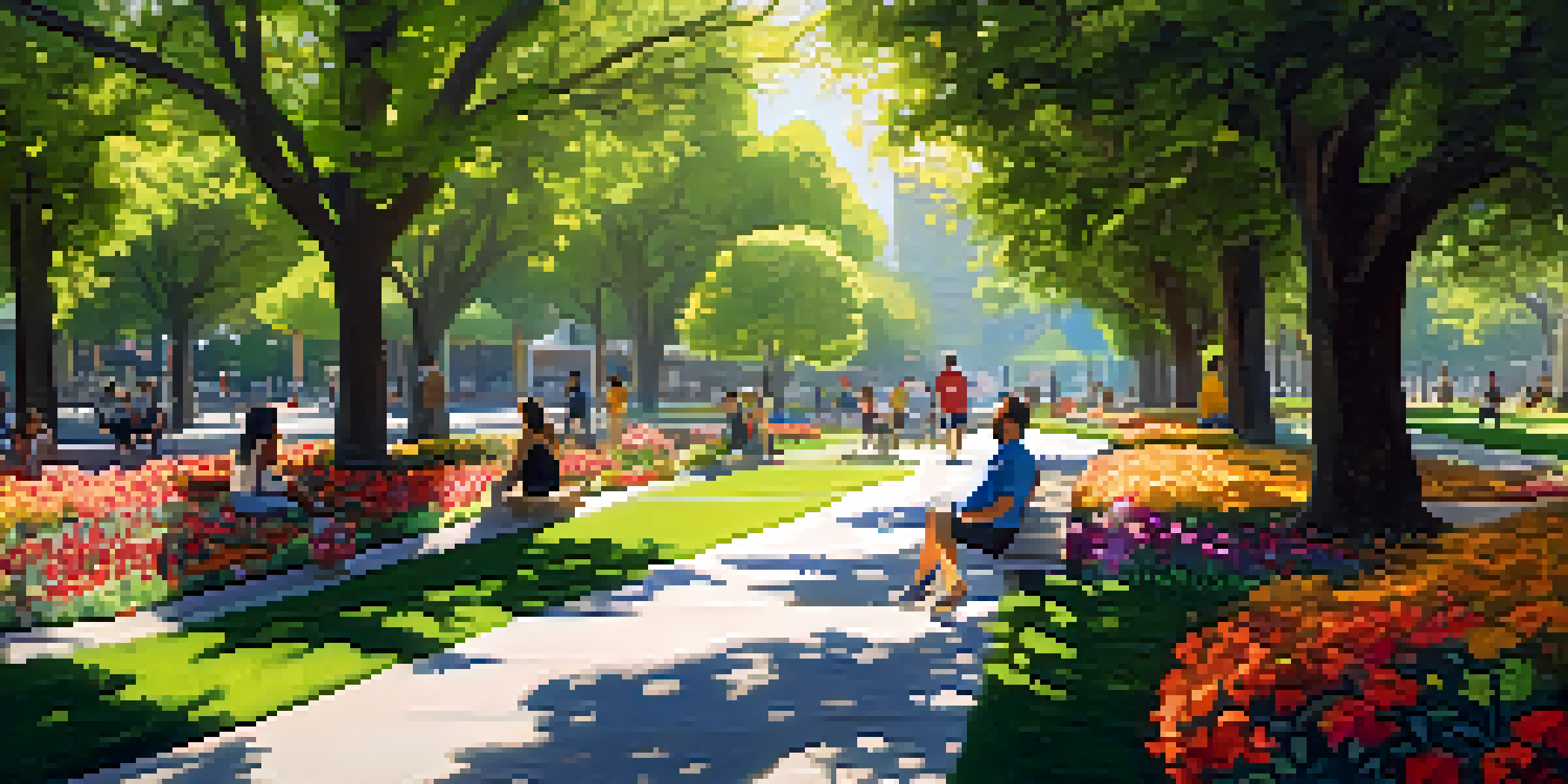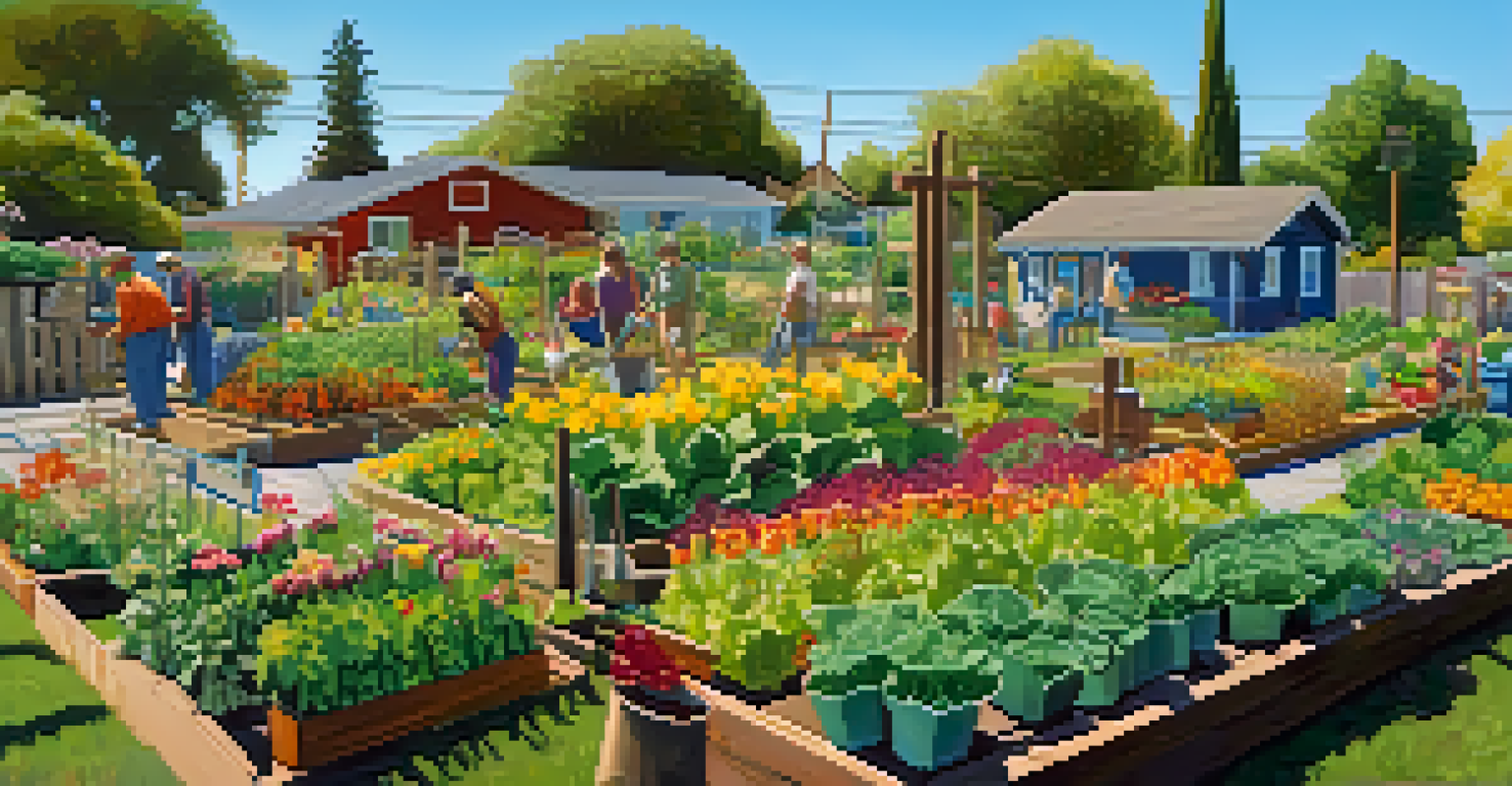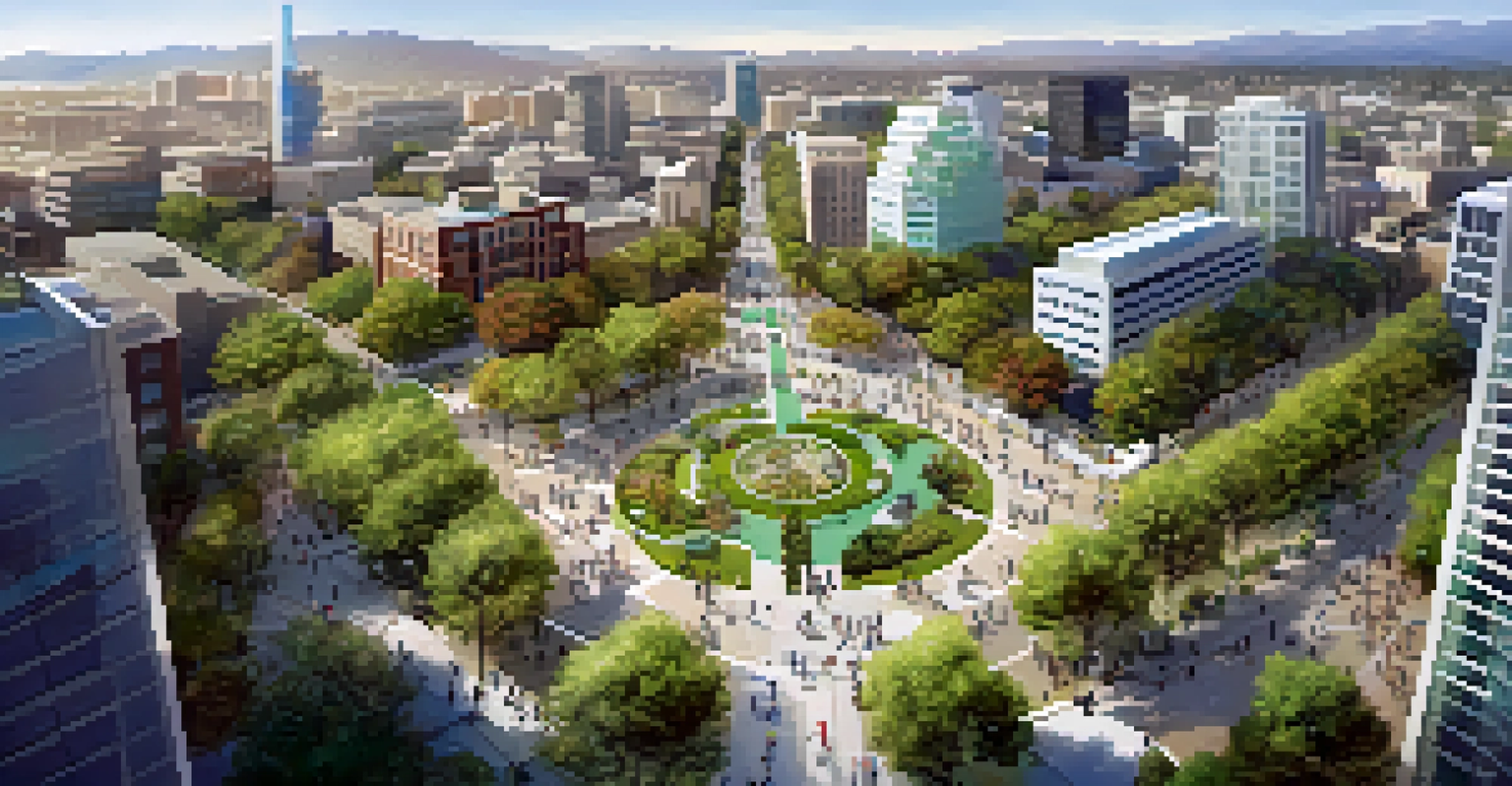Assessing Green Spaces in San Jose's Urban Development Plans

The Importance of Green Spaces in Urban Areas
Green spaces play a vital role in enhancing the quality of urban life. They provide essential areas for recreation, relaxation, and social interaction, contributing to the overall well-being of residents. In cities like San Jose, these spaces also help combat the heat island effect, improve air quality, and promote biodiversity.
Parks and green spaces are essential for a community's health, happiness, and economic well-being.
Moreover, parks and green spaces can increase property values and attract businesses, making them economically beneficial for urban development. They serve as communal hubs where people can gather, fostering a sense of community and belonging. This makes planning for green areas a critical component of sustainable urban development.
Incorporating green spaces into city planning is not just about aesthetics; it's about creating livable environments that prioritize health and happiness. As San Jose continues to grow, ensuring these spaces are integrated into development plans will be essential for maintaining a vibrant and sustainable city.
Current Green Space Initiatives in San Jose
San Jose has undertaken several initiatives aimed at increasing green spaces within the urban landscape. Programs such as the Urban Forest Master Plan and the Parks and Recreation Master Plan outline strategies to expand and enhance existing parks. This includes planting trees, restoring natural habitats, and creating new recreational areas.

One notable project is the development of the San Jose Downtown Parks Plan, which focuses on creating accessible green areas in the heart of the city. This initiative not only aims to provide more parks but also to connect them through walkable pathways, making it easy for residents and visitors to enjoy these spaces.
Green Spaces Boost Urban Well-Being
Green spaces enhance quality of life by providing areas for recreation, improving air quality, and fostering community connections.
These initiatives reflect a commitment to sustainable urban development, recognizing the importance of green areas for community health and environmental resilience. By prioritizing green space projects, San Jose is setting a precedent for other urban areas to follow.
Challenges in Expanding Green Spaces
Despite the positive outlook on green spaces, San Jose faces several challenges in expanding them. One major hurdle is the city's rapid population growth, which increases demand for housing and infrastructure, often at the expense of parks and natural areas. This can lead to a conflict between development needs and the desire for green spaces.
The future will be green, or not at all.
Additionally, funding can be a significant barrier to the maintenance and creation of parks. Economic constraints may limit the resources available for new green projects or the upkeep of existing ones. Without adequate funding, the vision for vibrant green spaces can fall short.
Furthermore, urban planning often prioritizes commercial and residential development over recreational needs. Addressing these challenges requires a collaborative approach involving city planners, community members, and environmental advocates to ensure that green spaces remain a priority in San Jose's future.
Community Involvement in Green Space Planning
Community involvement is crucial when it comes to planning and developing green spaces in San Jose. Engaging local residents in the decision-making process ensures that the parks meet the needs and desires of the community. Workshops, surveys, and public meetings are effective ways to gather input and foster a sense of ownership among residents.
Moreover, involving the community can lead to innovative ideas that reflect the unique character of different neighborhoods. This participatory approach not only enhances the design of green spaces but also encourages community stewardship, where residents take pride in maintaining and protecting these areas.
Community Input Shapes Green Planning
Engaging local residents in the planning process ensures that parks meet community needs and encourages ownership and stewardship.
By prioritizing community input, San Jose can create green spaces that resonate with the residents, making them more likely to be used and cherished. Strong community support can also lead to increased funding and resources for these projects, creating a win-win situation.
The Role of Technology in Green Space Assessment
Technology plays an increasingly vital role in assessing and planning green spaces in urban environments. Geographic Information Systems (GIS) allow planners to analyze land use, population density, and existing green areas to make informed decisions about where new parks should be developed. This data-driven approach can optimize the impact of green spaces on urban communities.
Additionally, mobile applications and online platforms can help residents report issues or suggest improvements for local parks. This real-time feedback loop fosters transparency and encourages civic engagement, making residents feel more connected to their urban environment.
As technology continues to evolve, it will offer new tools and methodologies for assessing the effectiveness of green spaces. This can lead to more adaptive and responsive urban planning, ensuring that green areas can meet the changing needs of San Jose's diverse population.
Measuring the Impact of Green Spaces on Well-Being
To understand the true value of green spaces in San Jose, it's essential to measure their impact on community well-being. Research has shown that access to parks and natural areas can reduce stress, promote physical activity, and improve mental health. By studying these effects, planners can justify the need for more green spaces in urban development.
Surveys and studies can provide valuable data on how residents use parks and the benefits they derive from them. This information can guide future initiatives and help allocate resources more effectively. For example, if data shows a high usage of community gardens, more resources can be directed there to enhance the experience.
Technology Enhances Green Space Planning
Using technology like GIS and mobile apps allows for better assessment and planning of green spaces, making urban environments more responsive to community needs.
Ultimately, quantifying the benefits of green spaces can lead to stronger advocacy for their inclusion in urban planning. As San Jose prioritizes holistic community health, understanding these impacts will be key to creating a greener, healthier city.
Future Prospects for Green Spaces in San Jose
Looking ahead, the future of green spaces in San Jose appears promising, but it will require strategic planning and community engagement. As urban development continues, there is a growing recognition of the need to balance growth with environmental sustainability. Integrating green spaces into new developments will be essential for this balance.
Moreover, ongoing projects and initiatives aimed at expanding parks, improving accessibility, and enhancing biodiversity signal a commitment to creating a greener city. The potential for innovative designs, such as green roofs and vertical gardens, also offers exciting opportunities to incorporate nature into urban environments.

While challenges remain, the collaborative efforts of city planners, community members, and technology will pave the way for a more sustainable and green San Jose. By prioritizing green spaces, the city can ensure that it remains a livable, vibrant place for generations to come.